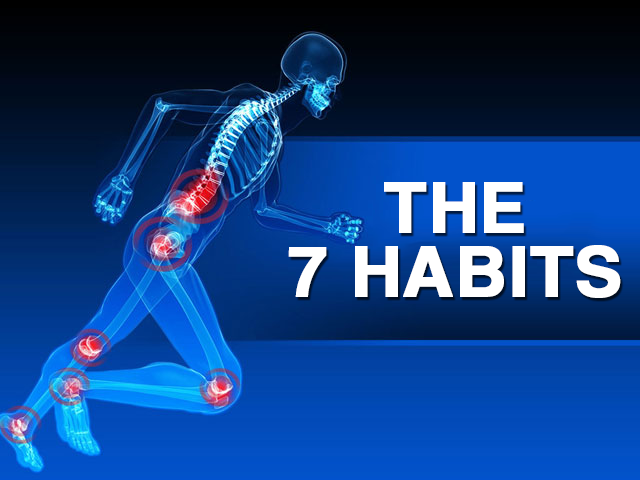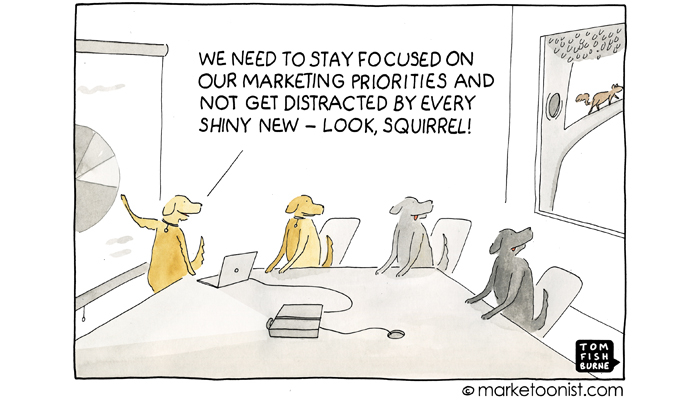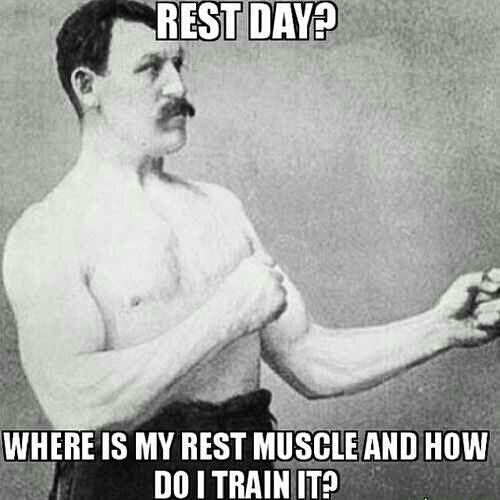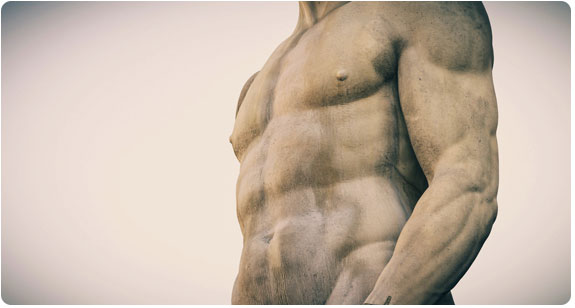The 7 Habits of Often Injured Athletes
 By Shane Dowd , CES, CMP
By Shane Dowd , CES, CMP

Habit #1 - Ego
😈 For recreational athletes - ego is the enemy.
Trying to impress your friends and lifting too much weight is a sure-fire way to get hurt. It's also a good way to make your chiropractor or surgeon rich.
As the old saying goes, "pride goeth before the fall." For athletes (myself included) "the fall" often means injuries that get worse and worse over time.
Don't get me wrong, for athletes that aspire to greatness, competition is invaluable. It's the competition without intelligent restraint that gets you into trouble.
🏋 The best athletes I know are highly competitive AND highly self-aware. They know their own limits and know when to put the brakes on. This allows for enduring greatness (longevity.)
Recreational athletes/weekend warriors should especially err on the side of longevity over temporary ego-driven glory.
⏰ After all, let's be real for a second. If you were looking back 20 years from now...are you really going to remember that time that you "totally kicked your friend's ass at Crossfitting?"
Probably not.
The harsh reality is you're more likely going to remember the permanent damage you did to your knees or back during that workout as you wince in pain while trying to tie your own shoes.
💪 Push hard...but don't be stupid. 🧠
Habit #2 - Shortsightedness
🤓 Habit #2 is intimately connected with Habit #1.
Ego makes you take stupid risks and shortsightedness makes you forget the long term goal - to be a healthy athlete for life.
🌲 It's the proverbial "missing the forest for the trees."
What's more important? That you set a 30 lb personal record (PR) with shitty form NOW (and then stall and stagnate for the next 6 months) OR that you lift a measly 2 more lbs every week and end up lifting 104 more lbs by the end of the year?
🐢 Take the mindset that you are the turtle, not the hare. Slow and steady wins the race especially when it comes to the career of the recreational athlete.
Professional athletes at the highest levels of competition may need to take risks to win. If you are Lebron James and are reading this...you may be excused for pushing it a little farther than most.
Habit #3 - Victim of the "Shiny Object Syndrome"

✨ What are "shiny objects" to athletes?
Complex/fancy looking skills are shiny objects. They lure us in with their breathtaking feats of strength, acrobats, and skill. They tempt us to pursue them before we are ready.
This is a massive trap.
🤸 Those that chase complex skills before they've mastered the basics have fallen prey to shiny object syndrome. They want to do press-handstands before they've gotten a basic handstand. They want to do a full-speed snatch before they have the technique or mobility to do a simple overhead squat.
In a broad athletic sense...what are the basics?
- Squatting
- Deadlifting
- Lunging
- Pushing/pulling
- Jumping + Landing
- Running
- Rotation
- Balancing
- Posture, joint & spinal awareness in all of the above
These are just some of the building blocks to larger movement patterns. Most people rush through these, which is unwise.
🏋️♂️ A better model is the Chinese Weightlifting team. They are known for not allowing their young athletes to use anything more than a broomstick for over a year while developing a broad base of fundamental skills and athleticism.
In contrast, in America, we have beginners going for snatch PR's in their first week.
See any potential problems with that?
🚶♂️ The moral? Walk before you run.
Habit #4 - Training Too Much

🧨 Athletes who take the "more is better" approach run the risk of eventually blowing up. Training is a constant balance between stress and recovery. If this equation is unbalanced...burnout & breakdown soon follow.
The old saying that "you don't get stronger in the gym" is true. You get stronger when you completely "off-switch", relax and recover and thus we must prioritize recovery.
⚡️ I once heard famous coach Pavel Tsatsouline tell a story about a powerlifter who would get hyped up, walk out onto the platform and deadlift 850 lbs (or something similarly insane), and then go take a nap 💤 before his next lift.
Can you imagine the amount of control this athlete had over his nervous system? The ability to "switch on" and then quickly "switch off" is one of the most valuable life skills an athlete can cultivate.
💪 The take-home message? Train hard...and rest "harder." 😴
Habit #5 -Training Too Little
👶 The opposite of "training too much" (training too little) is also a risk for your body. This is when an athlete gets too afraid of over-stressing their bodies. They make the error of treating their bodies like fragile babies.
Instead of lifting weights and running races, this athlete avoids any physical stress entirely. Often this happens after a series of injuries. The athlete takes up Yoga and thinks they are protecting themselves from injury when in fact they might be predisposing themselves to it.
🧘♂️ Yoga is great. However, many super-flexible yogis become useless when it's time to pick up a heavy box 📦 and move it.
Yoga, breathing, down-regulating, relaxing, stretching, etc is fantastic. However, it will NOT prepare you for all the things that life throws at you.
🏋️♀️ To better safeguard against injury, my yogi friends would be wise to incorporate a little resistance training into their routines.
Habit #6 - No 1-on-1 Coaching
👨🏫 Getting personal, 1-on-1 coaching from a great teacher may be expensive. However, I view it as essential. To be clear, I am not talking about having a personal fitness/sports coach for the rest of your life. That would be cost-prohibitive for most.
I'm talking about spending some period of your life under the watchful eye of someone with experience. Someone who can correct your tiniest errors and get you on the right track. An early investment in great coaching can save you thousands in medical bills down the road.
💰 In my own life, I've spent several years (and thousands of dollars) to be personally trained and mentored by some great coaches. Areas of study ranged from track & field, strongman, and Olympic weightlifting to yoga, massage, and mobility. My teachers included some names you've probably heard of (Ido Portal) and possibly many names you haven't heard of (Carl Valle, Matt Gardner, Phil Petachenko, etc.)
🦉 The point is - find a wing to climb under and learn all you can.
Yoga is great. However, many super-flexible yogis become useless when it's time to pick up a heavy box and move it.
Habit #7 - Never Caring About Mobility Work...Until It's Too Late
🏎 Imagine that your body is a sports car...
If strength training and cardio are racing the car then mobility work is tuning up the car. Athletes that race the car but never tune it up will eventually experience a breakdown. Period.
So why does it take so long for people to get turned on to taking care of their own bodies?
Human beings are slow...but they aren't stupid.
👉 A teacher once told me; "nobody cares about mobility until they are in enough pain."
I'm as guilty as anyone about this. I'm so hard-headed that it took a traumatic back injury in 2011 to finally get me to get my act in gear.
🧠 If you want to be in the top 1% of athletes - start caring about mobility sooner rather than later.
A Picture of the Perfect Athlete

👌 If ego, shortsightedness, and imbalanced training define the "always injured athlete"...what defines the perfect athlete?
Based on our 7 principles, the perfect athlete would be someone who:
- Is humble
- Takes the long view
- Masters the basics
- Doesn't train too much
- Doesn't train too little
- Gets 1-on-1 coaching
- Takes mobility / self-care seriously
👍 If you want to be this kind of athlete, check out our free products/products and 1-on-1 coaching to help get you on your way. Enjoy the journey!
About The Author











